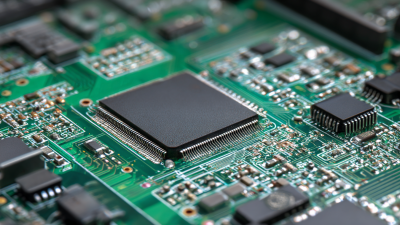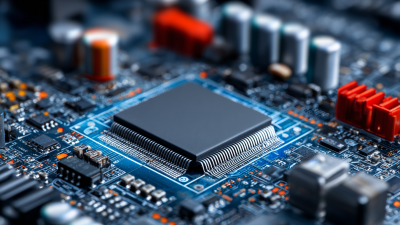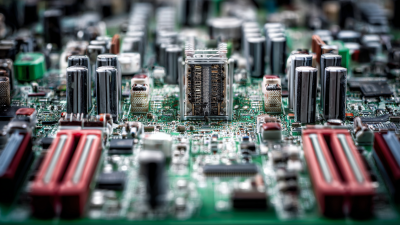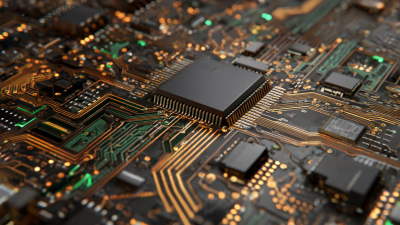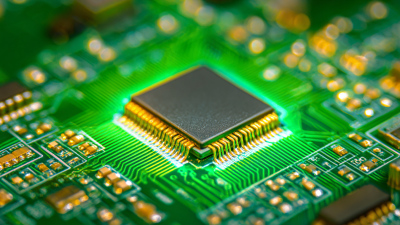In today’s fast-paced technological landscape, the importance of efficient circuit board design cannot be overstated. As the backbone of modern electronics, circuit boards play a crucial role in ensuring that devices operate at optimal performance. This blog will explore various strategies and tips to enhance your circuit board design, focusing on maximizing efficiency while minimizing costs and time. From component placement and routing techniques to thermal management and signal integrity considerations, we will delve into the key aspects that directly influence the effectiveness and reliability of your designs. Whether you are a seasoned engineer or a newcomer to the field, understanding how to improve your circuit board design is essential for staying competitive and delivering high-quality products in an ever-evolving market.

In today’s fast-paced technological landscape, the importance of efficient circuit board design cannot be overstated. As the backbone of modern electronics, circuit boards play a crucial role in ensuring that devices operate at optimal performance. This blog will explore various strategies and tips to enhance your circuit board design, focusing on maximizing efficiency while minimizing costs and time. From component placement and routing techniques to thermal management and signal integrity considerations, we will delve into the key aspects that directly influence the effectiveness and reliability of your designs. Whether you are a seasoned engineer or a newcomer to the field, understanding how to improve your circuit board design is essential for staying competitive and delivering high-quality products in an ever-evolving market.
In modern electronics, optimizing the layout of circuit boards is crucial for enhancing efficiency and performance. With the growing adoption of innovative PCB design software fueled by rapid hardware innovation and increasing demand for compact solutions, designers face the challenge of balancing complexity and functionality. Best practices in layout optimization can significantly impact power distribution, signal integrity, and thermal management.
One effective method involves embedding low-inductive half-bridge and gate driver packages with integrated capacitors directly into the PCB design. This approach minimizes the parasitic inductance and optimizes the switching performance of GaN-on-Si ICs, leading to improved efficiency. Additionally, utilizing Quadratic Unconstrained Binary Optimization (QUBO) solutions can facilitate the creation of optimal structures that effectively mitigate resonance issues, maximizing overall circuit performance.
**Tip**: Always prioritize the placement of high-frequency components to reduce loop areas, thereby lowering electromagnetic interference. **Tip**: Consider thermal vias and plane layouts to ensure efficient heat dissipation, directly impacting component reliability and lifespan. By following these practices, designers can create high-performing, reliable circuit boards that meet the demands of modern applications.
This bar chart illustrates the impact of various layout optimization techniques on circuit board efficiency. The data includes percentage improvements in efficiency based on different practices applied during the design process.
When it comes to enhancing circuit board design for maximum efficiency, selecting the right materials is paramount. The materials you choose can drastically influence thermal management, electrical performance, and overall durability. For instance, FR-4 is a widely used substrate, but in high-frequency applications, using materials like Rogers or Teflon can significantly reduce signal loss and improve performance.
Tip: Always consider the thermal conductivity of the materials. High thermal conductivity substrates can help dissipate heat more effectively, which is essential for maintaining the reliability of your circuits. In environments where high temperatures are a concern, materials like aluminum or copper substrates should be considered to ensure efficient heat management.
Another crucial factor is the dielectric constant of the materials, as this directly affects signal speed and spacing. Utilizing low-dielectric constant materials can pave the way for tighter spacing and faster signal transmission, which is especially advantageous in high-speed electronic applications.
Tip: Perform thorough testing of your selected materials under real-world conditions. This will provide valuable insights into how your circuit board will perform and help identify any potential issues before mass production.
Effective thermal management strategies are crucial for enhancing circuit board design, as overheating can lead to performance degradation and reduced lifespan of electronic devices. According to a report by the Embedded Systems Conference, over 65% of electronic failures are attributed to thermal stress, underscoring the necessity for robust thermal solutions. Implementing advanced heat dissipation techniques, such as thermal vias and copper pours, can significantly improve heat transfer away from critical components. This not only optimizes performance but also prevents catastrophic failures that might arise from excessive heat accumulation.
In addition to improved heat dissipation, utilizing advanced thermal interface materials (TIMs) can further enhance thermal conductivity between components and heat sinks. A study published in the Journal of Electronics Cooling and Thermodynamics highlights that innovative TIM formulations can offer up to 20% higher thermal conductivity compared to traditional materials. Moreover, integrating simulations and modeling tools during the design phase allows engineers to predict thermal behavior accurately and optimize circuit configurations for maximum efficiency. With the continuous evolution of technology, it becomes increasingly important to incorporate effective thermal management strategies to ensure reliability and longevity of electronic systems.

When designing printed circuit boards (PCBs), reducing electromagnetic interference (EMI) is crucial for maintaining performance and reliability. One effective strategy is the implementation of a three-layer power/ground plane cavity structure. This method not only enhances the electromagnetic shielding but also minimizes common mode noise, as the design ensures effective coupling between layers while reducing the paths for EMI propagation.
Tips: To further mitigate EMI, consider the layout of your components. Placing sensitive components away from high-frequency areas and utilizing proper grounding techniques can greatly improve signal integrity. Additionally, integrating EMI filters—such as capacitors in parallel configurations—can effectively suppress unwanted noise, providing a cleaner power supply path for your circuit.
Another effective approach is to explore spread-spectrum modulation techniques. By spreading the frequency spectrum of your signals, you can reduce peak EMI emissions, which is particularly beneficial in densely packed circuits. Combining this with snubber circuits can enhance EMI suppression further, allowing for more robust and efficient PCB designs in a variety of applications, from consumer electronics to automotive systems.
Utilizing simulation tools is a game-changer in circuit board design, allowing engineers to test and enhance efficiency before moving to production. By employing software such as SPICE or Altium Designer, designers can create virtual models of their circuit boards and run a variety of simulations. This approach not only helps identify potential issues early but also allows for optimization of components and layouts for energy efficiency.
One key tip is to leverage thermal simulation capabilities to ensure that components do not overheat, which can lead to inefficiency or failure. By analyzing heat distribution in the virtual environment, designers can make informed decisions about component placement and heatsink design. Another essential tip is to run signal integrity simulations, which can help avoid problems like crosstalk and reflection in high-frequency applications. By testing these parameters in a simulated environment, the final product can achieve maximum performance.
Furthermore, consider using electromagnetic simulation tools to evaluate how the circuit board performs in different environments. These tools can help in understanding how external factors like electromagnetic interference (EMI) might affect circuit performance. This proactive approach is vital in producing reliable, efficient circuit boards that meet modern demands.


